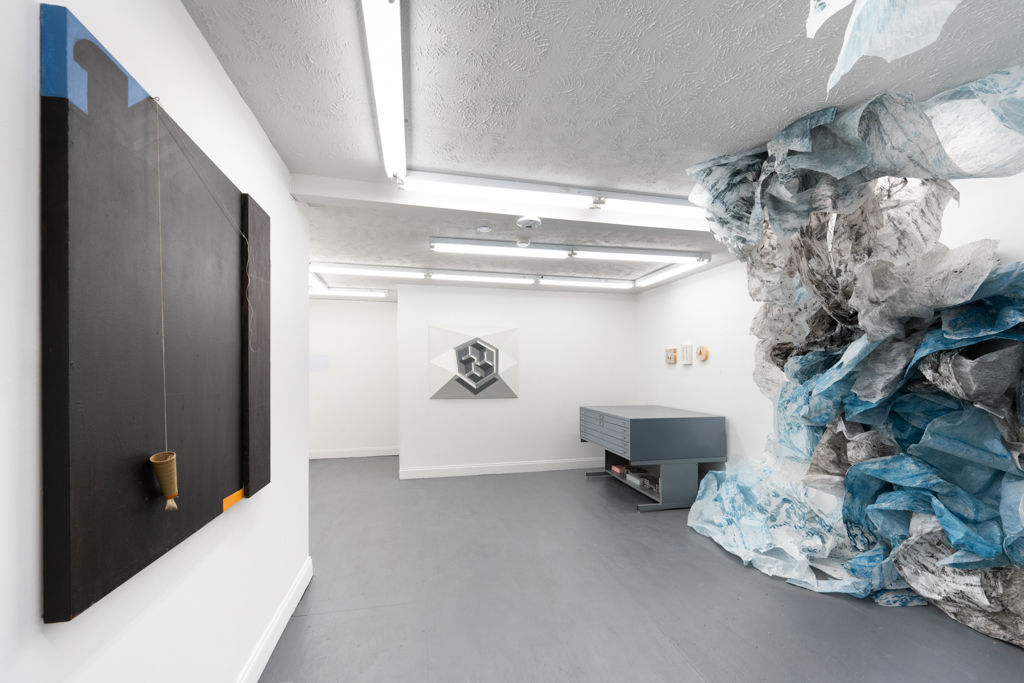
THE FOUNDATIONS OF WHAT
26 January - 4 March, 2023
SELECTED WORKS
ARTISTS

INSTALLATION VIEWS
CURATORIAL STATEMENT
Connect:
@gard.jones
@giuliapiera
@sebastianmartorana
Catalyst Contemporary presents, “The Foundations of What,” a group exhibition pushing the boundaries of contemporary sculpture while addressing deep-seated concerns about the truths that underlie our perceptions, our cultural principles, and relationships to one another. Artists include Jose Arellano, Alberto Cavalieri, Kei Ito, Gard Jones, Giulia Livi, Caryn Martin, Sebastian Martorana, James von Minor, and Geoff Robertson.
The title draws direct attention to each artists’ questioning and even subversion of principles and underlying assumptions about our world. In archeological fashion, they take aim at diverse but intertwined cornerstones of reality from uniquely personal perspectives and creative practices, unearthing fragile validity. The “what” referenced in the title is essentially a new circumstance, a novel place - a geography of experience constructed out of the dismantled virtues of contemporary life, of the redrawn thresholds framing perception, and by removing ourselves from the existential clutches of the past. The artists reconsider consumption and waste, building new systems of value that seek harmony in human experience within the environment, the legacy of accepted mythology, and even how words can build and destroy our identities. At the very same instant, the artists in this show want regrowth, they assert that the groundwork for the existing world we stand on is and should be interrogated.
Indeed, from Caryn Martin’s use of airy and delicately hand-printed paper to create an atmospheric, introverted - even inner body spacial experience, to Livi’s hyper-cohesive color and abstract forms, which beckon our eyes to assume they are merely domestic objects, to Robertson's re-employment of material waste from previous projects - reformed into the appearance of an owl pellet, the artists in this show use this emerging location as an experimental workspace, a land of discovery and a further call to question our current surroundings both in the gallery and in our everyday life.
Further avant-garde approaches include the use of words to deliver a blow to enduring institutions. Cavalieri’s concrete blocks, embedded with names of luxury brands and other epitaphs of popular, cultural aristocracy, draw attention to the things in our lives that we place value upon due to the nomenclature attached to that item, discrediting the consumptive force that drives the phenomena. While Martorana’s delicately carved words into a slab previously used as a printer’s stone, point out the treachery of denying the use of language and how governments can come to control conversations on our own identities, even the foundations of science, which we rely so heavily upon. Ito’s work mimics these thoughts as he builds monuments to things lost as we look at shadows of the past through images burned by an apocalyptical light long gone.
The remaining works make use of the iconography and symbolism found in mythology, art history and mathematics to navigate and explore creativity as a method of finding solutions and harmony. Gard Jone’s use of architectural details, paired with manmade and natural objects point toward and play off of mythological and grandiose aesthetics. Through balance and harmony, mathematics and the exhilaration of tension, Von Minor’s unassuming sculpture, masquerading as a painting, dives right into this playful duplicity and duality that disrupts our binary based thinking. Inspired by the geometry of Islamic art and architecture, his work converses clearly with Arellano’s morphing visual game nearby. Clear aesthetic elements of color, balance, shape and pattern create a virtual reality - a perception of the art object - that is, in a metaphysical and real way completely dependent on the viewpoint of the perceiver. This begs us to question our own interpretations of how and what we see.
The work in this show engages many mediums to describe themes that only sculptural three-dimensional objects and spaces can tell. They point us to and allow us the space to question the bedrock of our cultural momentum and how we can reimagine, reengineer, and connect with the core of our human experience: change.






































